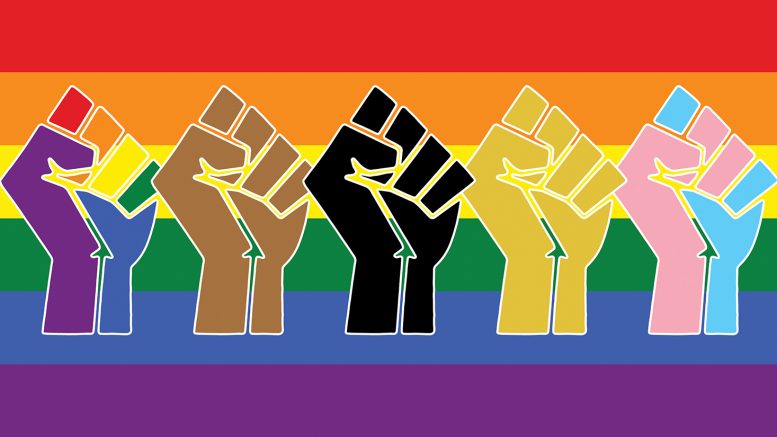On June 17, four black protesters – one of whom identifies as transgender – were arrested at the Columbus Pride Parade in Ohio.
The activists blocked the parade and asked for seven minutes of silence, one for each bullet shot at Philando Castile, a black man killed following racial profiling and police brutality. The activists also wanted to raise awareness about the existence of and the hardships faced by queer and trans people of colour. One activist claimed that instead of receiving support, two white women laughed and spat at her as the protestors were being arrested. The question needs to be asked – where is the solidarity for queer and trans people of colour?
Each year, as Pride parades begin to take place across the world, white cisgender people and white allies seem to take up the majority of space, celebrating their sexualities clad in rainbow clothes. But this rainbow lacks the colours that matter most. People forget that many of the most prominent LGBTTQ* activists have been people of colour, such as Marsha P. Johnson and Sylvia Rivera. Despite this, people expressed outrage when a Philadelphia-based group asked for the addition of black and brown to the current rainbow flag so often seen at Pride, and started a new campaign called “More Colour More Pride.”
There are a number of reasons why I believe that they should reconsider their opinion. More often than we think it is, racism is internalized in the LGBTTQ* community, be it subtle or not. Queer and trans people of colour have felt excluded from a many aspects of queer celebration. They have faced crude rejection on dating websites, where people are openly racist and employ harsh language such as “no blacks, no Latinos.” When these colours are added to the flag, it is a crucial step in putting an end to a cultural and racial barrier between queer people of colour and queer white people, who together are oppressed for being true to themselves. It is not to say that racial minorities require their own stripes to be able to identify with the LGBTTQ* community. It does not imply that all queer people of colour face the same kind of oppression. Rather, the move acknowledges and offers solidarity to those who are marginalized because of the colour of their skin as well as their sexuality.
When you wave a flag, use it as a sticker or even a button on your backpack straps, you make a statement. You open up a conversation with those around you. The request to add these colours has already opened up the conversation about queer people of colour and the way their identities intersect.
Unfortunately, a lot of people still argue against the addition of these colours, believing that the acknowledgment of someone’s race will create a racial divide within the LGBTTQ* community. However, if we keep avoiding the topics of race and racism, won’t we in turn create a more ignorant society that fails to see the differences between people, paving the way to bigotry by celebrating ignorance? If we really want to work towards achieving a society undivided by race, gender, and sexuality, we need to eliminate the stigmatization attached to various identities by accepting and celebrating our differences.


